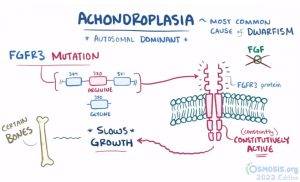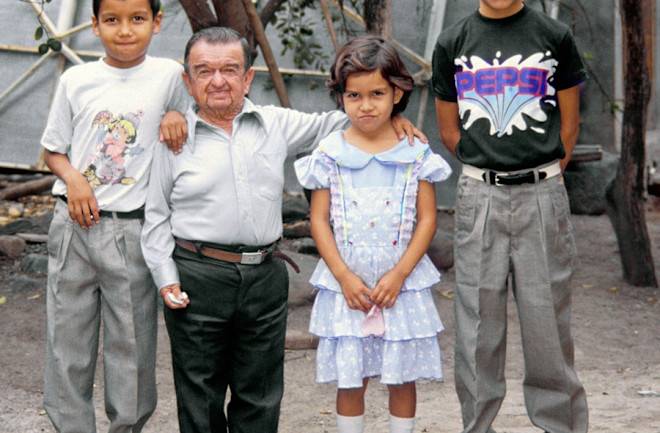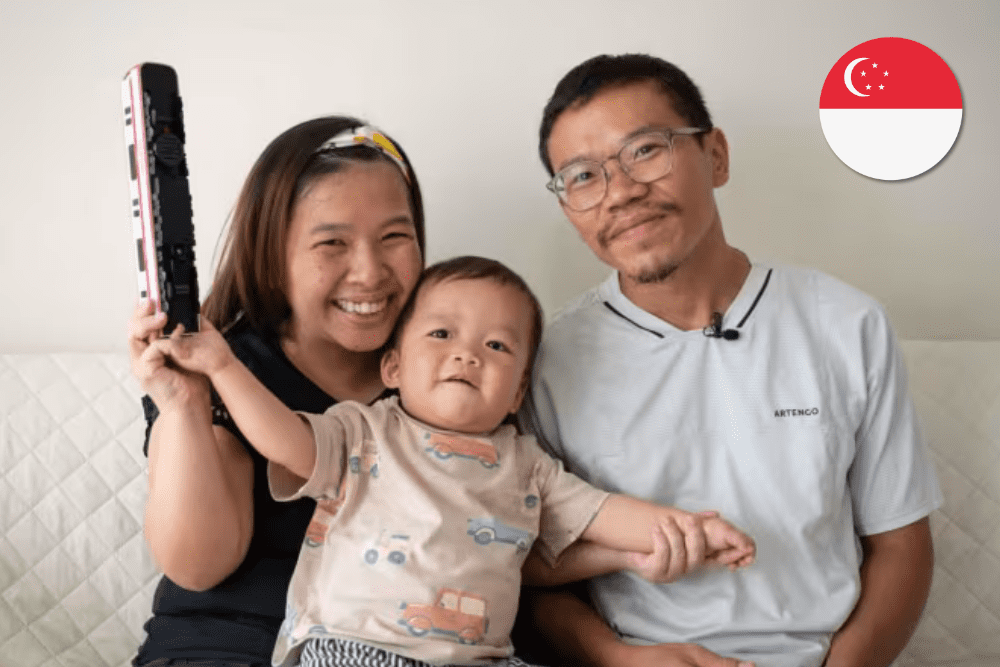“I didn’t want another child to face the same scrutiny from the people around him,” says Esther Xu, whose two-year-old son was born with dwarfism.
When Ms Xu learned her son would be born with dwarfism, a wave of fear and uncertainty washed over her. She worried about how the world would see him, and how he would see himself.
In a recent Channel News Asia interview, she described sitting with her husband after the diagnosis,
How do you prepare a child for a world that isn’t built for them?
And how do you balance medical realities with the hope of a fulfilling life? As families like Ms Xu’s navigate life with dwarfism, they confront society’s biases head-on, transforming fear into strength and isolation into advocacy.
What is Dwarfism?
When parents hear that their child will be born with dwarfism, the diagnosis often feels overwhelming. Dwarfism, a condition affecting bone growth and resulting in significantly shorter stature, is most commonly caused by genetic mutations.
The most common types of dwarfism, achondroplasia and hypochondroplasia, are caused by changes in the FGFR3 gene, which affects bone growth.

Dwarfism can also result from mutations in other genes, depending on the specific type.
These genetic changes can occur spontaneously or be inherited from a parent. In conditions like achondroplasia, which follow an autosomal dominant pattern, a parent with the condition has a 50% chance of passing it on to their child.
Globally, achondroplasia affects about 1 in 30,000 newborns, according to the Ministry of Health.
While individuals with dwarfism typically have normal cognitive abilities, the condition often brings physical challenges.
Types of Dwarfism
Disproportionate Dwarfism
With disproportionate dwarfism, it means that a person has some average-size parts of the body, as well as some shorter-than-normal parts of the body Achondroplasia is the most common type of disproportionate dwarfism – and the most common type of dwarfism in general. With achondroplasia, the person has a normal-sized torso but shorter-than-normal arms and legs.
View this post on Instagram
Indian actor and director Ajay Kumar (Guiness Pakru) has achondroplasia. He is known for holding the Guinness World Records for being the shortest actor to play a character in a full-length film, and rose to fame for his brilliant performance as the dwarf Prince in the 2005 film Athbhutha Dweepu.
Proportionate Dwarfism

With proportionate dwarfism, this means that the person is smaller than average all over. Laron syndrome (growth hormone receptor deficiency GHRD), primordial dwarfism are types of proportionate dwarfism.
Depending on the type, they may face joint pain, spinal issues, or breathing difficulties. Yet, with early interventions and medical support, many lead full, active lives.
For parents, learning about these medical realities is key to advocating for their child’s care and future.
Building Confidence With Dwarfism, in a World of Misconceptions
For children with dwarfism, the journey to confidence begins at home. Families play the main role in helping their children navigate a world that can be unkind to those who look different.
@lucysleight2 Most asked questions 🥰 #fyp #foryou #dwarfismawareness ♬ original sound – Lucy Sleight
In this TikTok, a content creator with dwarfism dispels prevalent myths, emphasising the role accurate information and empathy play in fostering a more inclusive understanding.
Ms Xu, in her CNA interview, shared how her own experiences of ridicule as a teenager shaped her resolve to instil resilience in her son.
“I still feel very bad and worry if my son will scold me in future and ask why I brought him into this world,” she admitted.
Her husband reminds her to focus on what their son can achieve rather than what he cannot.
Building confidence requires consistent effort, both in addressing insecurities and preparing for potential social challenges.
The Medical Aspects of Dwarfism
Living with dwarfism involves specific medical challenges that vary depending on the type and severity of the condition.

Many individuals experience complications related to bone growth, such as spinal curvature, joint pain, or restricted mobility. These issues can arise early in life and often require ongoing management.
Proactive and holistic medical care allows individuals with dwarfism to overcome challenges and pursue their goals with confidence
Managing Dwarfism with Lifelong Care
For individuals with dwarfism, managing health is a lifelong journey that addresses complications stemming from skeletal development, organ systems, and overall mobility.
With over 200 types of dwarfism, including achondroplasia, hypochondroplasia, and rarer forms like diastrophic dysplasia and spondyloepiphyseal dysplasia, care must be highly tailored to each condition’s specific challenges.
Spinal and Skeletal Health
Dwarfism often involves spinal issues like kyphosis, scoliosis, and stenosis, which can compress the spinal cord, causing pain, numbness, or difficulty walking.
Skeletal problems may include short or curved limbs and joint deformities like hip dysplasia or clubfoot, particularly in diastrophic dysplasia.
- Management: Includes bracing, physiotherapy, or surgeries like spinal decompression or osteotomies.
Joint and Mobility Issues
Joint pain and early-onset osteoarthritis affect many individuals with dwarfism due to altered biomechanics and weight distribution.
- Management: Corrective surgeries, such as limb-straightening osteotomies, and physical therapies are critical in maintaining mobility. Adaptive devices, including customised orthotics or walking aids, enhance independence.
Respiratory and Neurological Concerns
Narrow airways are common in several types of dwarfism and may lead to obstructive sleep apnoea or chronic respiratory difficulties.
- Management: Treatments can range from CPAP machines to surgical interventions like tracheostomy. Hydrocephalus (excess fluid on the brain) is another potential complication in some forms of dwarfism, which requires careful monitoring and sometimes surgical shunting.
Hearing and Vision Issues
Conditions like spondyloepiphyseal dysplasia and diastrophic dysplasia may cause recurrent ear infections, leading to hearing loss.
- Management: Conductive hearing loss can often be managed with hearing aids or surgical interventions. Similarly, vision problems, including myopia and retinal detachment, may require regular eye exams and corrective measures.
Building Community Support for Families with Dwarfism
Groups like Little Mighty Warriors, highlighted in the CNA feature, bring together parents, children, and adults with dwarfism to form a community that offers emotional and practical support.

These networks allow families to exchange advice on navigating medical care, managing societal challenges, and celebrating milestones unique to their experiences.
For parents, such communities provide guidance on how to advocate for their children in schools and medical settings.
For children, the importance of meeting peers with dwarfism cannot be overstated. Many children with dwarfism are the only ones of their stature in their schools or neighbourhoods, which can lead to feelings of isolation.
Being part of a group where everyone shares similar experiences fosters a sense of belonging and builds confidence.
Rewriting the Narrative of Dwarfism
Families like Ms Xu’s and Ms Sharbana’s remind us that dwarfism, while fraught with societal hurdles and medical complexities, can also be a wellspring of courage and camaraderie.
They know the world is far from perfect, but rather than focusing on what they cannot control, they place their faith in the power of belonging and the promise of a future shaped by empathy. As Ms Xu’s husband, Mr Soh, so poignantly puts it:
“What is so incomplete about you other than your height? You can lead a normal life, there is no point in blaming anyone.”
Header credit: Channel News Asia

